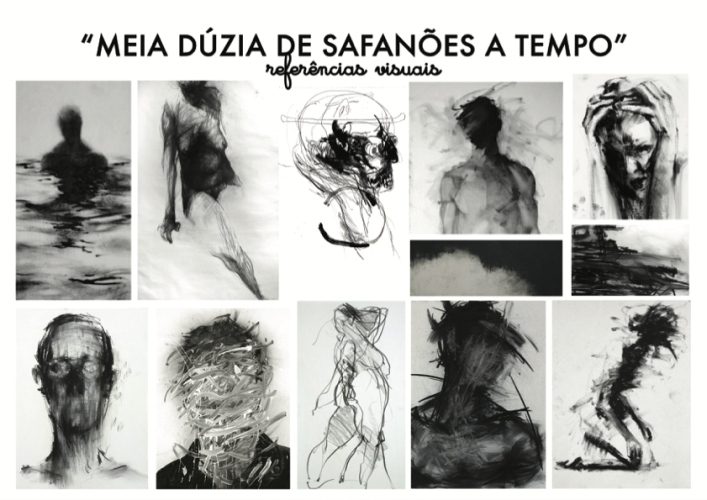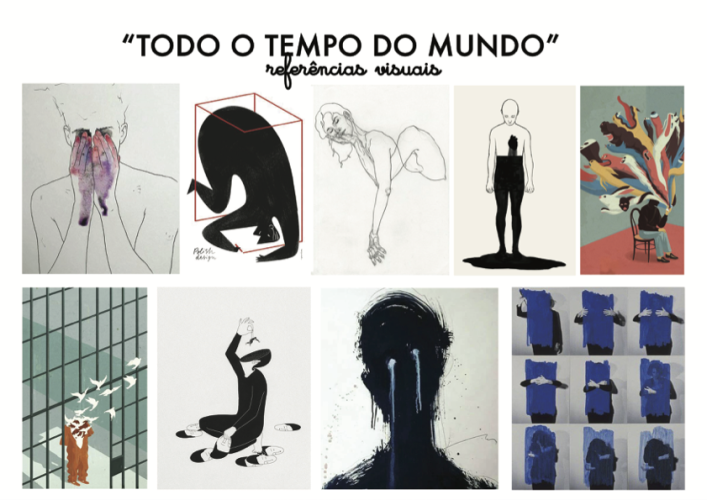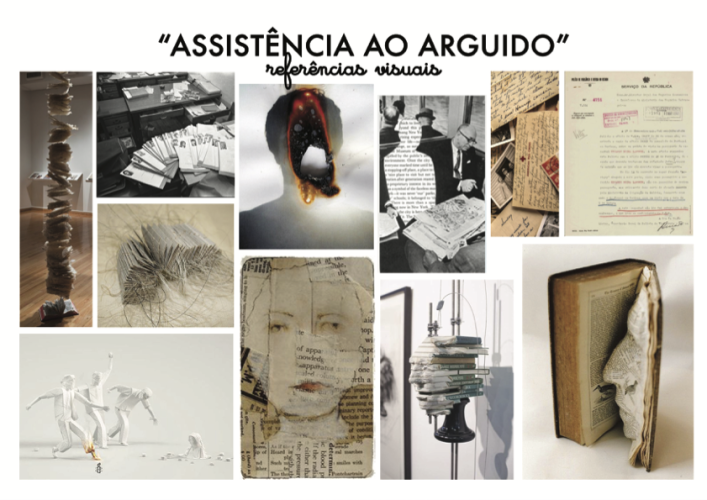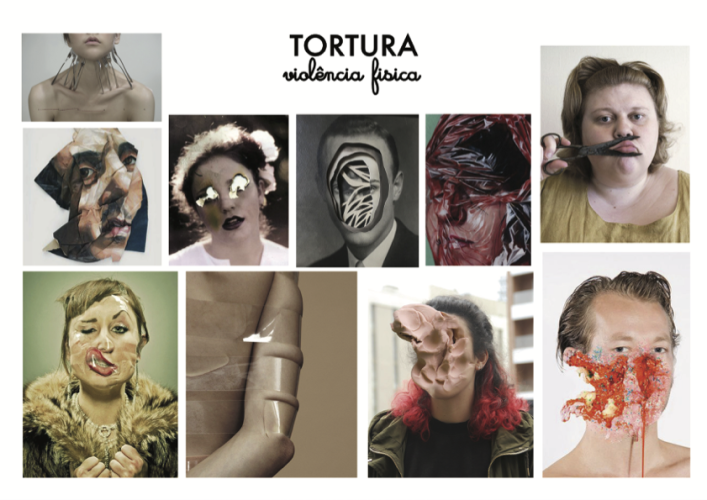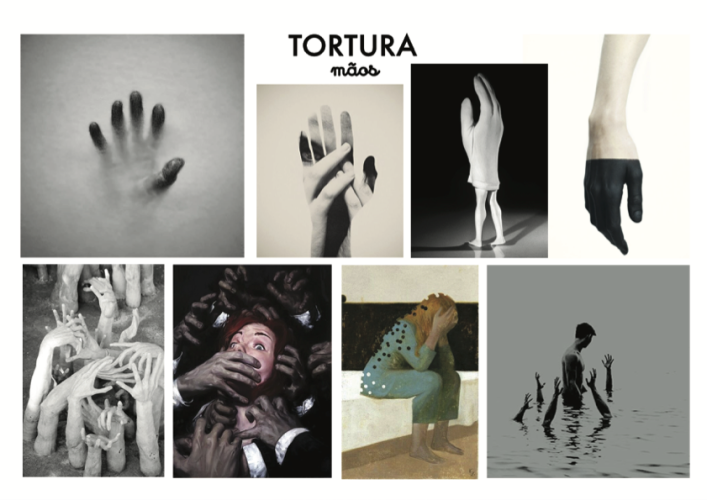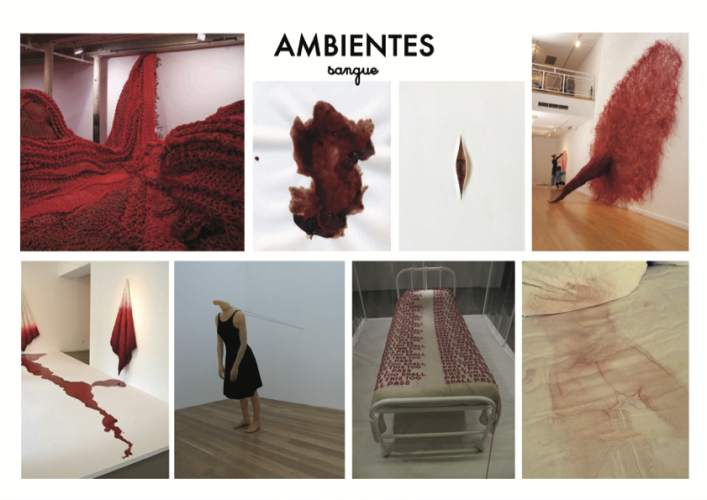short animated series (6 Ep. x 10′) by Alice Eça Guimarães
“A bem da nação”. É com estas palavras que terminavam todos os autos da polícia política portuguesa, um dos alicerces da ditadura de 1926 a 1974.
Alegando o “superior interesse da país”, era possível prender e torturar com impunidade. Só com os testemunhos dos sobreviventes, ex‐presos políticos, é possível resgatar este passado violento.
A partir desses relatos, constroem‐se 6 histórias ficcionadas em animação com as quais se pretende ajudar a preencher lacunas e silêncios da nossa história recente.
“For the benefit of the state”. It is with these words that all the records of the Portuguese political police, one of the foundations of the dictatorship from 1926 to 1974, ended.
Claiming the “best interest of the country”, it was possible to arrest and torture with impunity. Only with the testimonies of survivors, former political prisoners, is it possible to rescue this violent past.
Based on these reports, 6 fictional animated stories are constructed with the intention of helping to fill gaps and silences in our recent history.
EP. #1 – A MORTE LENTA | SLOW DEATH
It is the only story that takes place outside mainland Portugal.
It is told based on the correspondence between Pureza Alves and Joaquim Jorge. The words of love and hope that the couple exchange contrast with the images that report the experience of the young locksmith apprentice and communist party sympathizer during the period in which he was imprisoned.
Joaquim Jorge is arrested, along with his father and more than 100 men, and sent to Cape Verde where they open the Tarrafal concentration camp. Very isolated, with almost no communication with the metropolis, it is a prison sadly known as “the slow death camp”. Joaquim reaches adulthood in deplorable prison conditions, with a very poor diet, an austere climate and an almost total absence of medication. However, it is also in prison that Joaquim Jorge changes his life forever. Some of his fellow prisoners, like Bento Gonçalves, belong to the intellectual elite of the communist party and will be his mentors for the rest of his life. The prisoners hide books in the ground and, behind the guards’ beards, they read, discuss and study.
EP. #2 – ASSISTÊNCIA AO ARGUIDO | ASSISTANCE TO THE ACCUSED
“Assistance to the accused” is the euphemism used by PIDE/DGS in its official documents to indicate the practice of torture of the statue, in which the prisoner was forced to remain standing, without support and with his arms open, for long hours.
This episode is freely based on Edmundo Pedro’s testimony about his attempted escape from the Military court and his relationship with Fernando Colaço (former PIDE/DGS agent).
Softening the terms of torture is a common practice. It served as an anesthetic for Pide agents who were more resistant to physical violence and also prevented written evidence about torture from remaining, allowing impunity.
This episode discusses the individual responsibility of PIDE agents. Moving away from the simplistic categorization of “bad guys”, Pide agents are analyzed as human beings, in exceptional circumstances of freedom, who do not take responsibility for their actions, camouflaged by violent group behavior, legalized by the dictatorship.
EP. #3 – SE FORES PRESA, CAMARADA… | IF YOU ARE ARRESTED, COMRADE…
This episode is about the resisters who did not succumb to torture. Under immense pressure, they did not speak out to protect their comrades, the communist party and its ideals…
It is also about differences in class treatment, in which the worker or rural wage earner is treated in a much more vilifying way than an intellectual or doctor, as, for example, in the case of Conceição Matos, a clandestine activist, or the women of the village do Couço, agricultural workers who were subjected to great humiliation, both physical and psychological.
But above all, this episode talks about women who, from the 60s onwards, began to play a more active role: on the side of the resistance, instead of being dissidents’ wives, they were also considered dissidents and began to be systematically tortured like men. On the State side, as many police officers had been relocated to the colonies, due to the independence movements, women began to work on PIDE staff, with agent Madalena Oliveira being sadly famous for her effectiveness, who became head of the brigade.
EP. #4 – TODO O TEMPO DO MUNDO | ALL THE TIME IN THE WORLD
This episode talks about isolation. This is perhaps the hardest of tortures. The deprivation of stimuli leads the prisoner to a state of fragility such that, when the torturer finally comes to break the isolation, the prisoner tends to feel empathy for him.
“Alone in a cell, with no visibility to the outside, with nothing to do, no one to talk to, nothing to read, nothing to write, no hours, no days, going through the endless hours of days and nights, the prisoner in “isolation” is truly one man. Without time and without space, removed from life. As if he had been put in a hole, and the world continued to rotate, passing over or beside him. Before between enemies. A significant reaction was that of prisoners in “isolation” called for interrogation. How I longed for this call day after day. Going to interrogation was like going to see what was going on “out there”. A return to the world. And when you heard the footsteps of the squad that came to pick up a prisoner for interrogation in the corridor, and they headed towards the cell next door, you felt a bitter mixture of relief and frustration. The “luck” of not having gone, of probably not enduring new embarrassment or violence; and not having had the “luck” to go, to go “out there”
Silva Marques
It also addresses the fact that some women were arrested with young children, not having the appropriate conditions for their healthy growth.
EP. #5 – MEIA DÚZIA DE SAFANÕES | A HANDFUL OF SLAPS
The title of this episode is taken from a famous phrase by Salazar: “If the lives of some children and some defenseless people are not worth much, it does not largely justify half a dozen slaps in time on these sinister creatures.”
In a later period, during Marcelo Caetano’s government, violence in interrogation rooms grew alongside political contestation, fueled by the fight against the colonial war. Other groups, not affiliated with the communist party, such as progressive Catholics, joined the opposition to the regime. Its members are arrested and associated with armed struggle movements and are therefore subjected to violent torture.
In this episode, inspired by the testimonies of the brothers Conceição and Luís Moita, the prisoners gave in, not to physical violence, but to psychological violence, when, in a moment of fragility, a Pide, playing the role of “good” approached the prisoners with words understanding, breaking their resistance.
This tactic was used by PIDE doctors themselves who, appearing to have a hypocritical desire to help, prescribed sedatives to prisoners, while they were still subject to the torture of sleep.
EP. #6 – ESTA MULHER NÃO DORME | THIS WOMAN DOESN’T SLEEP
Interrogatórios contínuos é o nome que a Pide atribuía à chamada tortura do “sono”, isto é, a privação de dormir durante dias e noites. A tortura do sono tinha a vantagem de que não deixava marcas físicas no preso nem tão pouco qualquer prova escrita, apenas um escalonamento de turnos e uma frase “ Este homem não dorme”.
Mas, tinha consequências graves. Irene Flunser Pimentel lembra, na sua obra, “A história da PIDE” o caso de um preso que, depois de três dias sob tortura de sono e estátua, tentou suicidar-se com barbitúricos, um outro tentou golpear o pescoço com uma tesoura das unhas e um detido, conduzido pelo desespero, engoliu os vidros dos próprios óculos.
Este episódio é baseado principalmente no testemunho de João Pedro Soares e Domingos Abrantes.
PILOTE | TEASER [wip]
Ao longo das últimas décadas, as práticas de perseguição, coerção, prisão e tortura durante o regime do Estado Novo têm sido objecto de diferentes estudos académicos assim como de obras literárias, cinematográficas e televisivas. Com a série A BEM DA NAÇÃO pretendo, enquanto autora de cinema de animação, contribuir para a construção desta memória colectiva.
Interessa‐me sobretudo explorar a face oculta e, muitas vezes, obscura, destas práticas e vertê‐la num conjunto de universos plásticos que permitam sublinhar a natureza e os contornos do sofrimento infligido, ressaltar os actos de coragem e de superação daqueles que foram vítimas de persecução durante este período tão negro.
Tratando‐se de acções que decorreram na sombra e à sombra de artifícios burocráticos e de suspeita legalidade é especialmente desafiante recriá‐las recorrendo à expressividade e riqueza dos universos plásticos que o cinema de animação possibilita, exortando relatos reais ao recorrer a alegorias.
Esta será uma mini‐série de 6 episódios com 10 minutos de duração e cada episódio relatará uma história ficcionada, mas inspirada em histórias de vida reais. Pessoas que viveram, presenciaram ou foram de algum modo afectadas por aquelas práticas de perseguição, prisão e tortura.
Cada episódio protagoniza um tipo de tortura e o seu lastro. A narração é sempre bipartida, relacionando um espaço interior, o cárcere, com um exterior. A narrativa decorre de um ponto de vista feminino.
Há sempre uma mulher que relata a história, tendo ela sido vítima de coerção, prisão ou tortura ou “apenas” testemunha de actos violentos infligidos a terceiros, como relatora de experiências vivenciadas por familiares e amigos.
Em cada um de seis episódios é construída uma história focada num personagem, num tipo de tortura e as suas consequências.
São pequenas “grandes” histórias que tratam do sentimento de perda de dignidade humana, momentos de resistência e desistência, de denúncia e choro, de passagens mais breves pelo isolamento a longos períodos de reclusão, e a marca indelével do que foi suportado.
Reconheço que, hoje em dia já existe uma vasta obra escrita, com relatos sobre as torturas infligidas. Mas, apesar dos testemunhos, sobram espaços em branco, silenciados. Pretendo com este projecto dar corpo ao indizível e sinto que o cinema de animação é o território indicado para conferir uma outra dimensão a estas experiências, recorrendo a alegorias visuais que as técnicas da animação tão bem permitem, fintando os constrangimentos do real para assim poder transpô‐las para um campo surreal e algo fantasmagórico, mais próximo das sensações descritas pelas vítimas, que, muitas vezes, cediam a alucinações e estados de doença mental e física, provocadas pelo desalento.
Em cada episódio utiliza‐se uma técnica de animação distinta, escolhida especificamente para realçar as características do momento narrado, permitindo potenciar o carácter surreal e deformador daquela experiência: através da pixilação construimos metáforas visuais sobre a destruição do corpo; o desenho com traço e linha permite‐nos versar sobre a despersonalização do indivíduo, a utilização de objectos em stop‐motion permitir‐nos‐á transmitir a violência dos espancamentos e a mancha de tinta simbolizará o corpo, a forma como se desmembra e deforma, como se tinge ou incha quando sujeito aos maus tratos físicos da tortura.
Cada episódio terá um palco específico de vivência: desde a prisão do Tarrafal, a Aljube, a Caxias e à sede da PIDE na Rua António Maria Cardoso.
Over the last few decades, the practices of persecution, coercion, imprisonment and torture during the Estado Novo regime have been the subject of different academic studies as well as literary, cinematographic and television works. With the series A BEM DA NAÇÃO I intend, as an animation film author, to contribute to the construction of this collective memory.
I am above all interested in exploring the hidden and often obscure face of these practices and transforming them into a set of plastic universes that allow underlining the nature and contours of the suffering inflicted, highlighting the acts of courage and overcoming of those who were victims of persecution during this very dark period.
In the case of actions that took place in the shadow of bureaucratic artifices and suspected legality, it is especially challenging to recreate them using the expressiveness and richness of the plastic universes that animation cinema makes possible, encouraging real stories by resorting to allegories.
This will be a 6-episode mini-series of 10 minutes duration and each episode will tell a fictional story, but inspired by real life stories. People who lived, witnessed or were in some way affected by those practices of persecution, imprisonment and torture.
Each episode features a type of torture and its ballast. The narration is always bipartite, relating an interior space, the prison, with an exterior space. The narrative takes place from a female point of view.
There is always a woman who tells the story, having been a victim of coercion, imprisonment or torture or “just” a witness to violent acts inflicted on third parties, as a reporter of experiences lived by family members and friends.
In each of the six episodes, a story is built focused on a character, a type of torture and its consequences.
They are small “big” stories that deal with the feeling of loss of human dignity, moments of resistance and giving up, of denouncing and crying, of shorter passages through isolation to long periods of seclusion, and the indelible mark of what was endured.
I recognise that, nowadays, there is already a vast written work, with reports on the tortures inflicted. But, despite the testimonies, blank, silenced spaces remain. With this project, I intend to embody the unspeakable and I feel that animation cinema is the right territory to give another dimension to these experiences, resorting to visual allegories that animation techniques so well allow, feigning the constraints of reality in order to be able to overcome -them into a surreal and somewhat ghostly field, closer to the sensations described by the victims, who often gave way to hallucinations and states of mental and physical illness, caused by discouragement.
In each episode, a different animation technique is used, specifically chosen to highlight the characteristics of the narrated moment, allowing to enhance the surreal and deforming character of that experience: through pixilation we build visual metaphors about the destruction of the body; drawing with line and line allows us to talk about the depersonalisation of the individual, the use
of objects in stop-motion will allow us to convey the violence of the beatings and the inkblot will symbolize the body, the way it dismembers and deforms, how it dyes or swells when subjected to the physical abuse of torture.
Each episode will have a specific stage of experience: from Tarrafal prison, to Aljube, to Caxias and to the PIDE Portuguese Political Police) headquarters on Rua António Maria Cardoso.
Sendo um tema muito sensível e que trata actos de grande violência visual, é com particular cuidado que se escolhem as diferentes técnicas de animação e tratamento gráfico que serão usadas para convir o ambiente emocional desejado, respeitando a dignidade e a “verdade” dos testemunhos que lhe servem de base.
Cada episódio fará uso de uma técnica ou estilo de animação diferente, transformando os episódios em peças independentes, do ponto de vista criativa, apesar do cordão umbilical que as une.
TÉCNICAS A UTILIZAR
1. A MORTE LENTA ‐ pintura digital que simula a pintura manual, usando uma técnica próxima da aguarela com um esquema de cores reduzido a preto/ amarelo/ laranja com recurso ao jogo de contrastes e sombras próprios de um clima árido e quente.
2. ASSISTÊNCIA AO ARGUIDO ‐ stop‐motion usando como matéria‐prima para a construção dos cenários e personagens o papel. O papel é ao mesmo tempo um material versátil e frágil, passível de ser cortado, queimado, destruído, para novamente ser composto com certa facilidade, tal pasta de papel. Visualmente, o papel remete para o arquivo da PIDE e todo o manancial de informação recolhida pela polícia secreta: autos, mandatos de procura, declarações, cartas apreendidas, registos de escutas telefónicas e de informadores.
3. SE FORES PRESO, CAMARADA… ‐ a técnica a utilizar alternará entre a pixilação, que acontece na cela, onde a prisioneira está a ser torturada e o stop‐motion, na cozinha, recorrendo essencialmente à animação com alimentos e utensílios de cozinha.
4. TODO O TEMPO DO MUNDO ‐ desenho digital sobre fotografia. A fotografia será usada essencialmente no cenário, reproduzindo o espaço da cela e da sala de interrogações.
O desenho bidimensional representará a personagem principal e a mancha, negra, os agentes da PIDE. A cor, essencialmente em tons de vermelho, será usada para invocar sentimentos de raiva e as atitudes mais violentas.
5. MEIA DÚzIA DE SAFANÕES A TEMPO ‐ desenho digital simulando a linha livre e descomprometida do traço a carvão que será composto com mancha sempre que sentirmos necessidade de enfatizar uma parte do corpo, como por exemplo, os pés inchados pela tortura da estátua ou as marcas dos cassetetes eléctricos.
6. ESTE HOMEM NÃO DORME ‐ será essencialmente um trabalho de pixilação e stop motion uma vez que estas técnicas permitem jogar com escalas e distorcer o corpo humano de formas que parecem impossíveis no recurso à imagem real. Pontualmente será necessário recorrer à animação 2D para salientar algum aspecto psíquico da tortura.
Being a very sensitive subject and dealing with acts of great visual violence, it is with particular care that the different animation techniques and graphic treatment are chosen that will be used to suit the desired emotional environment, respecting the dignity and “truth” of the testimonies that serve as a basis.
Each episode will use a different animation technique or style, transforming the episodes into independent pieces, from a creative point of view, despite the umbilical cord that unites them.
TECHNIQUES TO USE
1. SLOW DEATH – digital painting that simulates manual painting, using a technique close to watercolor with a reduced color scheme to black/yellow/orange using the game of contrasts and shadows typical of an arid and hot climate.
2. ASSISTANCE TO THE ACCUSED – stop-motion using paper as raw material for the construction of the scenarios and characters. Paper is at the same time a versatile and fragile material, liable to be cut, burned, destroyed, to be composed again with certain ease, like paper pulp. Visually, the paper refers to the PIDE archive and the entire wealth of information collected by the secret police: records, search warrants, declarations, seized letters, records of telephone tapping and informants.
3. IF YOU ARE ARRESTED, COMRADE… – the technique to be used will alternate between pixilation, which takes place in the cell, where the prisoner is being tortured, and stop-motion, in the kitchen, essentially resorting to animation with food and kitchen utensils.
4. ALL THE TIME IN THE WORLD – digital drawing over photography. Photography will essentially be used in the setting, reproducing the space of the cell and the interrogation room.
The two-dimensional drawing will represent the main character and the black stain, the PIDE agents. The color, essentially in shades of red, will be used to invoke feelings of anger and the most violent attitudes.
5. HALF A DOZEN SLAPS – digital drawing simulating the free and uncompromising line of the charcoal line that will be composed with stain whenever we feel the need to emphasize a part of the body, such as, for example, the feet swollen by the torture of the statue or the brands of electric batons.
6. THIS WOMAN DOESN’T SLEEP – will essentially be a work of pixilation and stop motion since these techniques allow playing with scales and distorting the human body in ways that seem impossible using a real image. Occasionally it will be necessary to resort to 2D animation to highlight some psychic aspect of torture.
Budget: 814.020,00 €
Secured financing: 70.000,00 € (financial support by ICA for development)


